Natural heritage volunteering for all
On 6 October 2022, we hosted a half-day event about how to make natural heritage volunteer opportunities more inclusive.
The event featured speakers from the Royal Society for the Protection of Birds (RSPB) Scotland, The Conservation Volunteers (TCV), Able 2 Adventure, Royal Zoological Society of Scotland (RZSS), NatureScot and the Wildfowl and Wetlands Trust.
Our speakers gave the following tips for enabling everyone to take action for nature:
Seek out new perspectives
Think about what people or communities you may not have proximity to, such as LGBTQ+ people, people of colour, disabled people, working class people, people of different faiths, migrants and refugees, etc. Search online for information about their experiences and barriers they may face. If a prospective volunteer is from a background or community you may be less familiar with, ask how you can best support them and be open to adapting your roles.
For example, our speakers talked about engaging refugees and disabled people. For refugees, they suggested translating key materials into various languages, pre-paying travel expenses and choosing central and easily accessible locations. For people with autism, they recommended providing information and images about what to expect beforehand, who will be meeting them on-site and what the schedule is for the day. For physically disabled people, they suggested being clear on the facilities available, what the terrain is like and what adaptive equipment is available.
Ask how volunteers prefer to communicate
For many volunteer organisers, email is the preferred mode of communication, but this may not best suit the needs of all of your volunteers. For example, this may not be accessible for people experiencing digital poverty who don’t have regular access to the Internet. These people may prefer being called or texted. Younger generations are also less familiar with email, and may prefer being contacted via WhatsApp.
Also consider offering a range of ways that people can apply for a role: a written application form, a short phone call, a recorded voice note, a short video, an email, etc. This will enable a wider range of people to apply to your programme in a way that best suits them and showcases their unique talents.
Represent a diverse range of volunteers in your marketing
How opportunities are advertised can be a barrier to volunteering with natural heritage organisations. Using case studies or volunteer stories alongside advertisements can be a great way to encourage volunteers and can convey what can be gained from volunteering. Try to share stories from a diverse range of volunteers so that people of all backgrounds and experiences can envision themselves volunteering with your organisation.
In order to ensure that your advertisements are accessible to as many people as possible, also be sure to use inclusive language and design. For example, write in simple and plain English, ensure a high level of colour contrast between background and text colours, and write in short paragraphs. For more guidance on inclusive language and design, you can check out this helpful toolkit from the English Federation of Disability Sport.
Pay volunteer expenses
It’s important to pay volunteer expenses so that volunteers are not out of pocket and opportunities are accessible to people from a range of socioeconomic backgrounds. For many roles, expenses may just be travel expenses.
For other roles, such as residential volunteering wherein a volunteer will live on-site at a nature reserve for an extended period of time, organisations should try to cover as many costs as possible, such as accommodation, the cost of transport to and from the reserve and the cost of food during their stay.
Identify a clear point of contact
Some of Scotland’s natural sites are isolated and tricky to access by public transport. Having a clear contact for advertised roles is a great way to support prospective volunteers with queries and provide information about the site and ways of supporting access to the site and the role.
Co-design volunteer opportunities
Co-design is a design-led process that uses creative methods to encourage and engage a wide range of people to take part. There’s no step-by-step process, but instead a set of principles to be applied to a project.
Incorporating an inclusive volunteer voice at the centre of your volunteer programme will help you identify barriers to volunteering, create engaging and representative marketing materials and connect with communities and people that may be new to your organisation or sector.
Co-designing projects with a diverse range of volunteers is also a great way to evidence on funding applications that there is community enthusiasm and need for your work.
Pair up volunteers
Pairing up new or prospective volunteers with an existing volunteer can be a great way to help them learn about the role and meet another volunteer. It can also be a personal or professional development opportunity for the existing volunteer to gain experience in mentorship.
Support volunteers’ development
Have a conversation with prospective and new volunteers about their ambitions for the role and any skills they want to develop or experiences they want to have. This will help you tailor roles to support the development of volunteers, and increase volunteer satisfaction and retention.
If a volunteer is interested in a career in conservation, you can further support them by signposting any roles or opportunities that may become available, as well as offer to hold practice interviews with them or provide feedback on CVs or applications.
Offer social opportunities
Volunteering should be mutually beneficial. Think about how you can reward and thank your volunteers for their efforts. Offering social opportunities for volunteers to chat with other volunteers and staff is a great way to enable them to meet new people and make new friends.
Join Make Your Mark
Join 100+ volunteer-involving heritage organisations in Scotland who are working together to make heritage volunteering for all.

About the author
Make Your Mark
This is the make your mark author, can be used as a default.